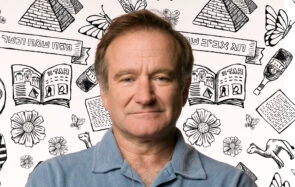In the age of “alternative facts” and “fake news,” my conversations with my 5-year-old have taken on a whole new cadence.
“I don’t like green beans,” Ravi said.
“That’s asparagus,” I corrected.
“Careful,” Yael, my partner, muttered, warning me under her breath.
“Well, we can have different opinions, Tati,” Ravi sharply retorted.
I know I’m entering a bit of a minefield so I tread mindfully.
“Ravi, do you know what facts are?” I asked.
“No.”
At least she’s honest.
“Facts,” I explained, “are what things are. Like, this is Elsa, for example,” I said holding her beloved doll.
Her eyes sprung forward as her heroine’s name was mentioned.
“I couldn’t call her, for example, Anna, could I?”
“Well, you could. But that would be wrong, Tati,” she said determinedly.
“Exactly!” I said, hopeful. “Now, opinions are different than facts. You can think this is Anna but it doesn’t change the fact that she’s Elsa, right?”
Ravi played with Elsa’s hair, not entirely acknowledging the conversation we were having.
“Good,” I said. “So these are asparagus.”
Ravi suddenly scowled. She dropped Elsa firmly on the table. She lowered her shoulders and her eyes and folded her arms. She turned abruptly to her mother (who wisely had removed herself from this exchange) and said: “Tati isn’t respecting my feelings.”
This has become our new dynamic, more or less. Somewhere, in between 4 and 5, pre-k and kindergarten, Ravi has turned into an adolescent — the slightest facial expression or remark on my part can instigate a near nuclear meltdown on hers. With all the talk of universities cultivating “safe spaces” for students to speak their minds, how do I as a parent encourage her audacious spirit while showing her there is (was?) such a thing as an encyclopedia?
Enter the tooth fairy, like an expertly timed press release. Ravi’s been wiggling that front tooth of hers at every waking moment. Finally, last week, on a snowy day, the deed was done. She was thrilled. But then came a dozen questions about the tooth fairy and her methods.
I started to doubt myself and the entire tradition. Wouldn’t it be more prudent of me to forgo the myth altogether — especially in an era of “alternative facts?” At some point, she’ll discover her parents’ involvement. And when that moment comes, what happens to her wonder and what will she think of our handiwork?
The tension was palpable: I want Ravi to know that things are what they are — that there are such things as facts in this mysterious world of ours. At the same time, however, I want her to continue to hone her spirited imagination.
“How does the tooth fairy get into our house?” Ravi asked.
“Well, the fairy sort of looks like your parents, so…” I tried.
“I wish I could be awake when the tooth fairy comes in.”
“Only when you’re asleep,” Yael and I said, almost simultaneously.
“How does the tooth fairy know which house to go to?” Ravi pressed.
“The fairy just knows,” I said curtly.
“Sure,” Ravi said, “but, like, where does the fairy put all the teeth?”
“Where do you think the tooth fairy puts all the teeth?” I asked, exasperated.
“In a basket,” Ravi said, rolling her eyes as if she was stating the most obvious thing ever. (How do her opinions get formed? And where on earth does her delicious creativity stem from? )
“But it must get smelly in there,” she added. Of course.
In the morning, Ravi races into our room to show us the dollar and the note the tooth fairy has left her. Beaming, she reads us the letter.
I’m smiling, too, knowing that even though the tooth fairy could be labeled an “alternative fact,” having her come visit was unquestionably a win for our family. And as tiring as the tug-of-war between reality and imagination can be, there’s a part of me that knows this tension never really dissipates. It’s just that, as adults, we adapt to it.
In just a few days we’ll celebrate Passover and we will fill a cup for Elijah. What will Ravi do when it’s time to open the door to usher him in? Will she be expecting the tooth fairy to accompany him? I have no idea. (Will she have a ton of questions? Probably.) In the meantime, I cherish her investigative curiosity about life. And I hope reality doesn’t disappoint her too much.







